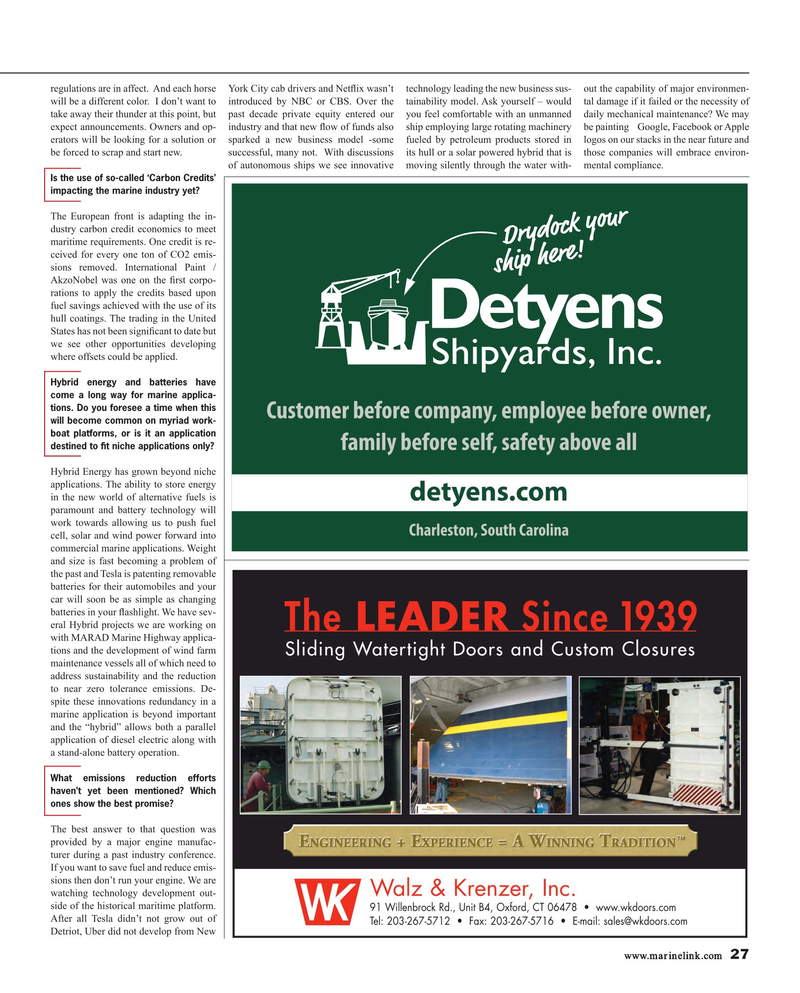
Page 27: of Maritime Reporter Magazine (January 2017)
The Ship Repair & Conversion Edition
Read this page in Pdf, Flash or Html5 edition of January 2017 Maritime Reporter Magazine
regulations are in affect. And each horse York City cab drivers and Net? ix wasn’t technology leading the new business sus- out the capability of major environmen- will be a different color. I don’t want to introduced by NBC or CBS. Over the tainability model. Ask yourself – would tal damage if it failed or the necessity of take away their thunder at this point, but past decade private equity entered our you feel comfortable with an unmanned daily mechanical maintenance? We may expect announcements. Owners and op- industry and that new ? ow of funds also ship employing large rotating machinery be painting Google, Facebook or Apple erators will be looking for a solution or sparked a new business model -some fueled by petroleum products stored in logos on our stacks in the near future and be forced to scrap and start new. successful, many not. With discussions its hull or a solar powered hybrid that is those companies will embrace environ- of autonomous ships we see innovative moving silently through the water with- mental compliance.
Is the use of so-called ‘Carbon Credits’ impacting the marine industry yet?
The European front is adapting the in- dustry carbon credit economics to meet maritime requirements. One credit is re- Drydock your ceived for every one ton of CO2 emis- sions removed. International Paint / ship here!
AkzoNobel was one on the ? rst corpo- rations to apply the credits based upon fuel savings achieved with the use of its hull coatings. The trading in the United
States has not been signi? cant to date but we see other opportunities developing where offsets could be applied.
Hybrid energy and batteries have come a long way for marine applica- tions. Do you foresee a time when this
Customer before company, employee before owner, will become common on myriad work- boat platforms, or is it an application destined to

 26
26

 28
28
